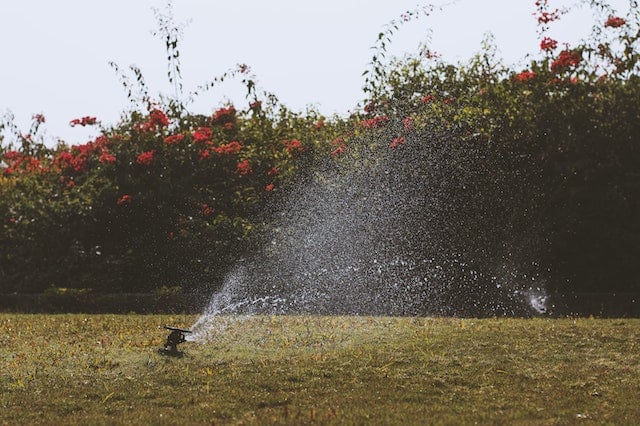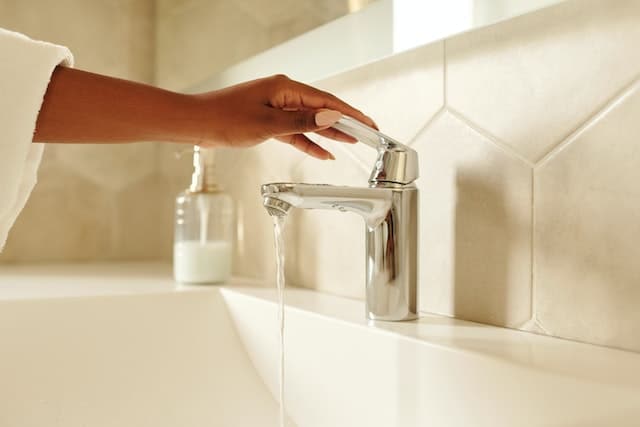Many of us take the water supply that we have for granted. Every time you open the faucet, water gushes out. Three-quarters of the Earth is covered by water, so why would you worry about being careful about using this essential commodity? Well, contrary to popular belief, water is not unlimited. In fact, climate change has triggered substantial water scarcity across the US.
Instances of water shortage are being witnessed throughout the country. Even states like California and Oklahoma are experiencing severe droughts that are some of the worst in modern times. Towns like Tulsa in Oklahoma have been listed among many places in America at high risk of acute water shortage by the year 2050.
In times like these, it has become imperative to be efficient with preserving water and cutting waste as much as possible. Here are a few steps that you can implement at home to make your family more water-efficient:
Use adjustable water-flow fixtures
The marvel of modern technology is that there are numerous ways to conserve precious resources without compromising on most daily tasks. When talking about mitigating the wastage of water in your household, an effective solution is to use low-flow or adjustable water flow fixtures. These pieces of hardware are designed to cut the water flow during a shower, flushing, or even washing their hands.
If you are a resident of at-risk towns like those in the state of Oklahoma, you can get in touch with a professional Tulsa shower replacement company to explore available options for low-flow fixtures.
Various studies estimate that a single American can use as much as 80 to 100 gallons of water per day. However, the Environmental Protection Agency (EPA) states that one home can also waste nearly 90 gallons of water daily. In order to curb this waste, low-flow fixtures come in handy.
What does low-flow hardware do exactly? Well, a conventional flush can use as much as 2 to 4 gallons of water per flush, whereas a low-flow flush uses just 1.6 gallons which is a considerable saving. Similarly, the normal flow rate for a showerhead is 2.5 gallons per minute, but with a low-flow fixture, you get less than 1.5 gallons per minute. And don’t worry; the flow is designed in such a way that it doesn’t affect your showering experience.

Control water spent while watering the garden
Did you know that Americans with gardens or backyards use as much as 9 billion gallons of water just to irrigate these spaces? That is an exceptional amount of water that can be conserved in a number of ways. Given that water is not an abundant resource, it is important to take steps and reduce the amount wasted on trivial things like watering gardens. Some water-efficient ways include:
- Tweak your system and timelines for irrigation in a way that only the parts that need it are watered.
- Since a lot of water can be lost to evaporation, soaker hoses and other extensions to the hose pipe can help spray directly on the ground rather than in the air.
- Water your plants early in the morning. This reduces the loss from evaporation that occurs midday and also prevents mildew. Watering at night can also cause your grass to start rotting.
Other steps you can take include replacing normal grass with drought-resistant varieties. You will need to contend with the fact that your grass is not as lush green as your other neighbors, but you are going to save enormous amounts of water that is usually wasted while watering.
Take your car to a wash bay
Many people use the ordinary garden hose to wash their cars. This process takes up exceptional amounts of water. As surprising as it may sound, just a 10-minute car wash can use up to 100 gallons of water, which is absurd. Therefore, it is best to either invest in a pressure washer that drastically cuts the amount of water used or take the vehicle to a proper wash bay close to your home.
Contrary to popular belief, washing your automobile at home requires much more water than doing it at a self-service car wash. The car wash facility’s high-pressure hoses can thoroughly clean a vehicle while using less water. Not to mention that washing your automobile at home pollutes the storm drains designed to carry away rainwater. An automated carwash typically uses just 11 gallons.
It takes less time and also efficiently cleans the car because you don’t have to worry about leaving swirl marks in the paintwork from a regular wash with a garden hose.
Collect rainwater for use
Rainwater is often lost and wasted because we believe it is unfit for use. That couldn’t be further from the truth. This water is clean and can be used for a variety of purposes like watering the garden and even showering but only after cleaning it thoroughly, especially if it comes from the roof. In case your roof has downspouts and gutters, it is easy to install a storage container and collect this water for use on a daily basis.
Be sure to check local regulations regarding collecting rainwater because some places restrict this practice by law. If you live in a place where it is allowed, you are in luck. Installing a storage container for rainwater is affordable, and the only additional investment you need to make is to ensure proper treatment of this water so that it doesn’t become a breeding space for insects carrying diseases.
Conclusion
It is easy to ignore the actual scarcity of water when there isn’t an imminent shortage lurking over your head. However, if water wastage continues, the future looks considerably bleak. Every household must take responsibility for water-efficient use and take necessary steps to cut wastage as much as possible. You can reduce your water consumption by implementing the tips mentioned above; these tips will also cut your water bill in the long run.













Leave a Reply